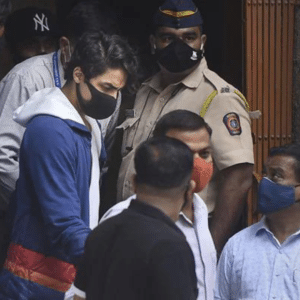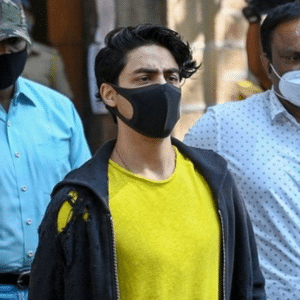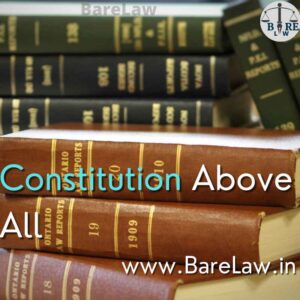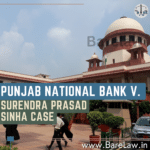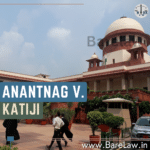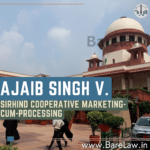
Case- Case Brief of MC Mehta and Another v. Union of India and others
Citation- 1987 SCR (1) 819
Introduction:
The Indian subcontinent has its unique environmental resources, and it is known for its climate conditions. These resources are in their vulnerable stage due to man-made disasters and the economic mindset of those people. It is worth stating that there are economic needs for the betterment of an individual and for society as well. So, we cannot ignore that while protecting our natural resources and human conditions. Judiciary also has never disregarded economic development. But at the same time, it does not enhance such an economic development at the cost of environmental sustainability and the right to life and livelihood. This article deals with one such case, where the judiciary has foreseen the future Indian development and laid down an important precedent relating to the environment and liability of industries in India if interfered with the rights of its citizens and environment.
Facts of the case:
Facts of the case are that the petitioner filed the writ petition under Article 32 of the Indian constitution seeking a direction to enable the closure of many units that were working under the Shriram Corporation in Delhi. The ground for such direction is that the company had been engaged in hazardous substances. While the proceedings were in place, there was an escape of oleum gas from one of the units of Shriram corporations. An application was filed by the Delhi Legal Aid board for awarding the compensation in this case as many have suffered due to the accident. The high court had already directed the company to function in compliance with a few of the conditions. But, later, this petition was appealed and brought before this apex court. The case was transferred to this apex body which had to deal with few constitutional issues raised in this case.
Issues raised:
Three main issues raised in this case were,
⦁ Whether the defendant corporation, Shriram Limited, can be regarded as a state for the purpose of article 12 of the Indian Constitution or not?
⦁ Whether a writ petition for the violation of article 21 shall be availed against Shriram limited, which is a public company limited by shares and has been engaged in public activity and for the public interest?
⦁ Lastly, what is the amount of liability of any entity which has been involved in the hazardous or inherently dangerous industry? Does the rule of strict liability apply, or any other principle is applied for the determination of liability?
Laws involved:
⦁ Article 12 of the Indian Constitution
⦁ Article 21 of the Indian Constitution
⦁ Rule of Rylands v. Fletcher
Arguments:
The defendants argued that the apex court should not entertain the constitutional issues that have been included by the petitioners after the case has been filed in the court. Also, there were no claims mentioned in the original petitions of the case. Counsel also contended that the gas leak took place only after the case had been filed and while the writ petition was in place and was not decided. No amendment shall be made by the petitioners just to include the claim for compensation for the victims of this case. Also, there was no application made for such an amendment along with the writ petition. So, it is clear that there were no constitutional issues that arose while filing the same.
Decision:
Firstly, the Supreme Court bench looked into the maintainability of a writ petition against the defendant company- Shriram Limited Corporation. It referred to the contention made by the defense counsel on the writ petition made. As mentioned above, under the arguments section, it is clear that the defendant restricted or contended to limit the applicability of article 21 of the Indian constitution. Supreme Court observed that the contention of the defendant is not sustainable as they restrict the usage of article 32 on the ground that petitioners filed an application to include the damages caused while this petition was in place. Court did not forgive such contention and stated that article 32 not only empowers the court to order or direct in case of violation of fundamental rights but also to take up cases even if there was no proper representation of the victims who have been denied their rights under the constitution. It cited the importance of the Bandhua Mukti Morcha case, where the apex court took suo moto cognizance over the issue by considering the same through a letter made to the court. Thus, it is clear that even if the application for the compensation under article 32 is not applied also, the court can direct the defendant to pay the compensation for those victims who suffered through their acts.
Secondly, the court laid down a principle that is different, both in terms of applicability and the origin of such jurisprudence. It defined what strict liability is, which was laid down in the case of Rylands v. Fletcher case. The rule laid, in this case, is that, when a person brings anything that is hazardous to his premises for his purpose, and in case if the thing gets out damaging the other or causing some disturbances, then he shall be strictly liable for the same. The defense of his lack of willfulness no negligence would never disable his liability. This is the rule of strict liability, and the same is applied mostly in English jurisprudence. The Supreme Court pointed out this point and held that Indian Jurisprudence should be different in its application and procedure. By stating this, the court came up with the Absolute liability principles.
According to this rule, the entity or a person who is engaged in the hazardous activity that would harm others in case of escape, then the person or the entity shall be liable absolutely in case of the same damages to the others and also liable to pay compensation to all those who got affected. No exception will be applicable, like in strict liability. Hence, absolute liability has been established.
Conclusion:
Having seen this case, it is clear that the judiciary had laid down an important precedent for the years to come in the future, especially in a country like India where there are a lot of Industries engaging in different chemicals and other harmful substances. We should also ensure that there is a balance between economic development and the protection of environmental resources, which would ultimately help the right to livelihood as well.
You may also like to read:
-
02 Oct 2021 Case BriefsCase Brief on Rupa Ashok Hurra v. Ashok Hurra Writ petition (civil) 509 of 1997
-
06 Oct 2021 Legal AffairsAryan Khan’s Narcotics case – Legality
-
07 Oct 2021 Legal AffairsNDPA case against Aryan Khan
-
12 Sep 2021 Know Your LawConstitution above all
-
12 Sep 2021 The Constitution of IndiaFundamental Rights: Right to Constitutional Remedies

